.
Top 10 Earthwatch Expeditions of 2017
.
1. Saving Joshua Tree’s Desert Species
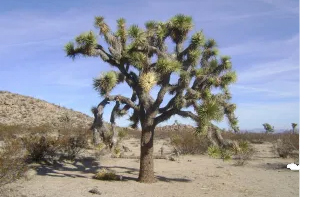 Joshua Tree National Park in Southern California has seen increases in wildfires, severe storms, and persistent droughts due to climate change. Volunteers help safely trap and release reptiles, small mammals, and arthropods, and conduct vegetation surveys to better understand the movement of species within this desert ecosystem and help to develop a critical baseline understanding of how climate change is shaping this environment.
Joshua Tree National Park in Southern California has seen increases in wildfires, severe storms, and persistent droughts due to climate change. Volunteers help safely trap and release reptiles, small mammals, and arthropods, and conduct vegetation surveys to better understand the movement of species within this desert ecosystem and help to develop a critical baseline understanding of how climate change is shaping this environment.
.
I was impressed not only with the knowledge and expertise of the scientists, but also with their compassion and concern. This was shown by their compassion for and consideration of the research subjects, plants and animals. Traps were set and attended so as not to hurt or injure. Even plants and bugs were not unnecessarily tromped on. Each of the participants was treated with consideration and care. Even discussion of those who might not value the research or misbehaving park visitors were respected. I heard one of the scientists say, ‘It’s their park too. We have to teach them how to experience it if they don’t know how.
— Alison Bishop
.
.
2. Uncovering the Mysteries of Colorado’s Pueblo Communities
 In southwest Colorado, Earthwatch volunteers are uncovering some of the least understood questions around great houses of ancestral Pueblo communities. Archaeologists at Crow Canyon Research Center are discovering the nature of Chaco influence and impact of drought on building practices during the Pueblo II period in a region filled with mountainous cliff dwellings and canyons.
In southwest Colorado, Earthwatch volunteers are uncovering some of the least understood questions around great houses of ancestral Pueblo communities. Archaeologists at Crow Canyon Research Center are discovering the nature of Chaco influence and impact of drought on building practices during the Pueblo II period in a region filled with mountainous cliff dwellings and canyons.
.
All of the staff and researchers at Crow Canyon are great to work with. They are always attentive to the needs of volunteers, and show that they really care about our welfare and our involvement in the research.
— Warren Stortroen
.
.
3. Amazon Riverboat Exploration
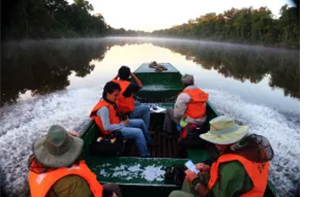 A kaleidoscope of wildlife lives deep in the heart of Peru’s flooded Amazon region, including rare pink river dolphins, macaws, and small alligator-like caimans. Volunteers survey these species and more while operating out of a historic boat—collecting data that directly shape local conservation and management policies.
A kaleidoscope of wildlife lives deep in the heart of Peru’s flooded Amazon region, including rare pink river dolphins, macaws, and small alligator-like caimans. Volunteers survey these species and more while operating out of a historic boat—collecting data that directly shape local conservation and management policies.
.
.
I am a bench experimental biologist. The expedition introduced me to an entirely different kind of science. Learning about community-based conservation, meeting the young biologists who were our teachers and the local people who were our boatmen, and experiencing environments and landscapes entirely new to me—it was enormously enjoyable.
— Barbara Baltelle
.
.
4. Wildlife in the Changing Andorran Pyrenees
 In the high slopes of the Andorran Pyrenees, as in other mountain ecosystems, climate change is altering the landscape. Volunteers are helping researchers to investigate the amazing biodiversity of these forests and alpine meadows so they can identify mitigation strategies. During their nine days on the project, they learn to identify birds, assess mammal diversity with camera traps, study alpine flowers, and track bats under the stars.
In the high slopes of the Andorran Pyrenees, as in other mountain ecosystems, climate change is altering the landscape. Volunteers are helping researchers to investigate the amazing biodiversity of these forests and alpine meadows so they can identify mitigation strategies. During their nine days on the project, they learn to identify birds, assess mammal diversity with camera traps, study alpine flowers, and track bats under the stars.
.
The scientists—Bernat, Irene and Jana—could not have provided a better experience. Their enthusiasm and eagerness to share information engaged the team and allowed us to feel a real part of this project. I learned a great deal about employing scientific method to obtain data that would be of value. As a new retiree, it felt great to realize continued physical and mental abilities that could be of use. I was always encouraged to challenge myself, but never expected to do more than what I was comfortable with.
— Henry Bowen
.
.
5. Wildlife of the Mongolian Steppe
 A wilderness landscape with a rich diversity of wildlife that few people ever experience—that’s the beauty of Mongolia. Here, volunteers are assessing the health and behavior of Argali sheep, Lesser Kestrels, Cinereous Vultures, Siberian ibex, and other species—many of which are threatened by poaching, illegal mining, and overgrazing.
A wilderness landscape with a rich diversity of wildlife that few people ever experience—that’s the beauty of Mongolia. Here, volunteers are assessing the health and behavior of Argali sheep, Lesser Kestrels, Cinereous Vultures, Siberian ibex, and other species—many of which are threatened by poaching, illegal mining, and overgrazing.
.
.
I learned a lot about the local community and the project. The community is highly involved, therefore you can see the impact. I learned from the herdsmen that during the past 30 years, climate change has had a direct impact on the local community. This project also brought out the best in me as I learned to work with my fellow teammates.
— Bernard Johnpulle
.
.
6. Climate Change at the Arctic’s Edge
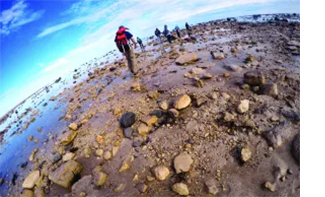 Churchill, Manitoba, known as the “polar bear capital of the world,” is located at the Arctic treeline and is extremely sensitive to small environmental changes that have a huge impact on ecosystems. Warming temperatures have led to shrinking areas of polar sea ice, freshwater wetlands that are drying up, and less extensive winter snowpack that melts earlier. Volunteers are helping researchers to gather evidence of climate change in this extraordinary region to better understand what the future may have in store for the environment.
Churchill, Manitoba, known as the “polar bear capital of the world,” is located at the Arctic treeline and is extremely sensitive to small environmental changes that have a huge impact on ecosystems. Warming temperatures have led to shrinking areas of polar sea ice, freshwater wetlands that are drying up, and less extensive winter snowpack that melts earlier. Volunteers are helping researchers to gather evidence of climate change in this extraordinary region to better understand what the future may have in store for the environment.
.
The expedition made me realize that this is the type of work I would possibly want to do in the future. Before this, I didn’t know what being a field scientist really entailed. But being a part of this team made me appreciate the work of field (and all) scientists and truly understand the importance of work like this.
— Olivia Ellman
.
.
7. Protecting Whooping Cranes and Coastal Habitats in Texas
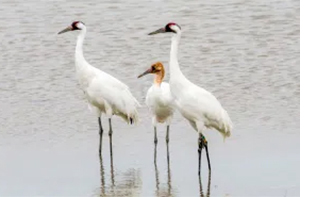 Hunting pressure and landscape changes have pushed the endangered Whooping Crane to the brink of extinction. Thanks to conservation efforts, the only wild migratory population, which winters in the Aransas National Wildlife Refuge, has grown from just 15 birds to more than 300. Volunteers are helping scientists along the Gulf Coast of Texas, a region that has seen some of the most devastating impacts of Hurricane Harvey, to survey Whooping Crane habitat and foraging patterns to inform protection measures for their winter home.
Hunting pressure and landscape changes have pushed the endangered Whooping Crane to the brink of extinction. Thanks to conservation efforts, the only wild migratory population, which winters in the Aransas National Wildlife Refuge, has grown from just 15 birds to more than 300. Volunteers are helping scientists along the Gulf Coast of Texas, a region that has seen some of the most devastating impacts of Hurricane Harvey, to survey Whooping Crane habitat and foraging patterns to inform protection measures for their winter home.
.
This program provides an excellent opportunity for the average citizen to become educated about our planet at a level beyond the textbook. I learned more about the earth’s beautiful resources and the importance of protecting this endangered species and its habitat. I gained firsthand knowledge of the work by the few that care so much to dedicate their lives to accomplish this.
— Rick Bryant
.
.
8. Following Forest Owls in the Western U.S.
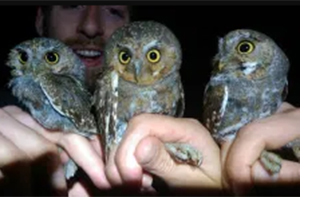 Deep within the aspen groves in northern Utah and the riparian canyon and coniferous forests in southeastern Arizona, a suite of small forest owl species seek out tree cavities for their nests. But climate change threatens to disrupt the routine of these species. Researchers, assisted by Earthwatch volunteers, are conducting nesting surveys, measuring, photographing, and banding several small cavity-nesting owl species, including Flammulated, Elf, and Whiskered Screech Owls.
Deep within the aspen groves in northern Utah and the riparian canyon and coniferous forests in southeastern Arizona, a suite of small forest owl species seek out tree cavities for their nests. But climate change threatens to disrupt the routine of these species. Researchers, assisted by Earthwatch volunteers, are conducting nesting surveys, measuring, photographing, and banding several small cavity-nesting owl species, including Flammulated, Elf, and Whiskered Screech Owls.
.
I have been on 17 Earthwatch expeditions and this was one of the best. Dave and Markus (the scientists) were always patient, enthusiastic and generous. They understood that a key ingredient of a successful expedition is making certain that the volunteers feel useful. We all worked hard and reveled in that.
— Alice Jacklet
.
.
9. Climate Change: Sea to Trees at Acadia National Park
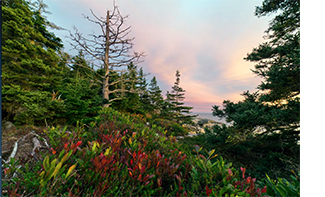 Maine’s Acadia National Park is a popular pit-stop for migratory birds that need to rest and refuel, thanks to its abundance of berries and insects. But changes in climate have shifted the timing of this rendezvous, which may affect the survival of species that rely on each other for pollination and sustenance. Volunteers are assisting scientists in studying the effects of climate change on land, in freshwater lakes and streams, and along the rocky seashore of this iconic New England landscape.
Maine’s Acadia National Park is a popular pit-stop for migratory birds that need to rest and refuel, thanks to its abundance of berries and insects. But changes in climate have shifted the timing of this rendezvous, which may affect the survival of species that rely on each other for pollination and sustenance. Volunteers are assisting scientists in studying the effects of climate change on land, in freshwater lakes and streams, and along the rocky seashore of this iconic New England landscape.
.
Real world data collection—fantastic! The Schoodic area is breathtakingly beautiful. The variety of tasks and environments (forest and intertidal) made for an interesting adventure. Also, I now know what phenology is! This project gave me an appreciation for the difficulty of getting good data.
— Michael Flumian
.
.
10. Conserving Marine Life along Catalina’s Coast
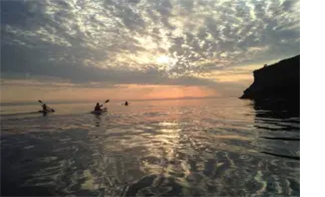 On the picturesque island of Catalina, located off the coast of southern California, scientists and Earthwatch volunteers are assessing the impact of Marine Protected Areas on the abundance of species such as California sea lions, gray whales, and common dolphins. They are also monitoring threats from climate change and human activities and helping to conserve this unique coastal habitat.
On the picturesque island of Catalina, located off the coast of southern California, scientists and Earthwatch volunteers are assessing the impact of Marine Protected Areas on the abundance of species such as California sea lions, gray whales, and common dolphins. They are also monitoring threats from climate change and human activities and helping to conserve this unique coastal habitat.
.
The expedition opened my eyes to the opportunities within science and the accessibility for all. Also, that science is something which should be enjoyed as well as questioned.
— Emily Mawbey
.
To learn more about any of these projects, email us at info@earthwatch.org, or call us at 1-800-776-0188.
.
Sign up for the Earthwatch Newsletter
Be the first to know about new expeditions, stories from the field, and exciting Earthwatch news.